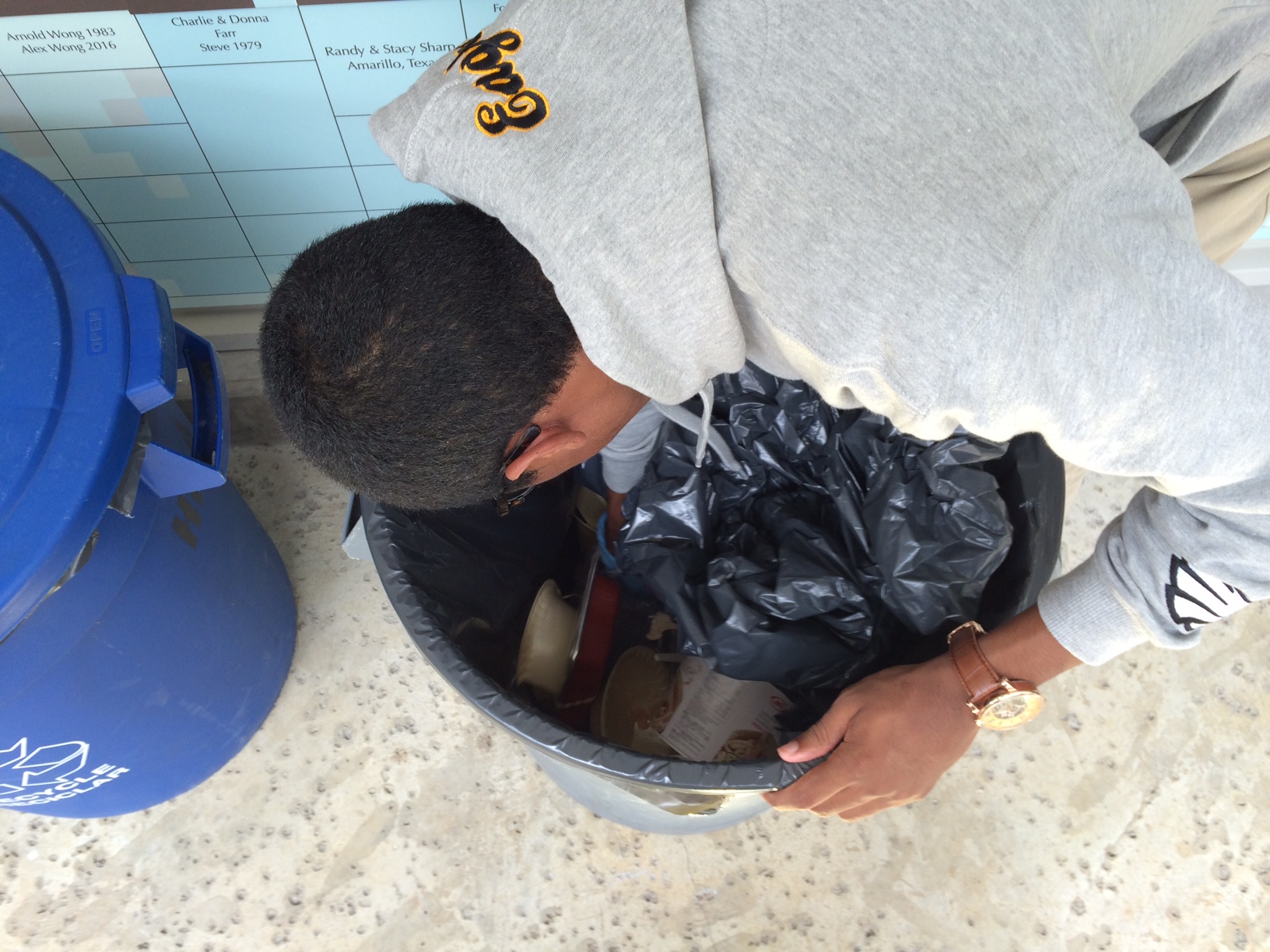Club Conducts Food Waste Audit


By Karly Tom (’16) and Jeremy Chang (’15)
However, one need does not need to turn to such expensive methods to save the world. Making the change to help the environment can begin with something as easy as not wasting food.
On Wednesday September 17, the Environmental Club conducted a food waste audit at the high school campus. Everyone on campus was asked to put their food and liquid waste into buckets placed throughout the campus during the day. The goal of the audit was to gather data for future compost projects and to design a waste reduction plan.
[one_third]
“Food waste is bad for the environment in a few different ways,” says Claire Mitchell, science teacher and advisor for HBA’s Environmental Club. “The primary [reason] is the amount of methane gas that it produces. When you put food waste into a landfill and it starts to decompose, it produces a lot of methane gas, which is actually a greenhouse gas.” Greenhouse gases contribute to global warming in that they absorb harmful infrared radiation from the sun instead of repelling them.
Mitchell says that the club’s ultimate goal for this year is to build big composting bins to help reduce the amount of food waste on campus. “Probably the biggest benefit [of reducing food waste],” she says, “is just taking that food waste, putting it back into the soil and improving the quality of soil so we can grow more crops and feed more people. Here at HBA, if we grow some of our own produce, we might be able to cut down on our cost of food that we purchase from [our] vendors.”
During the food audit, Environmental Club officer Aaron Wilford and other club members manned waste stations during lunch to help make sure students did not throw their food and liquid waste into regular trash cans. However, they still had to dig through some classroom trash cans, which were left unmanned. Wilford said, “I knew that not everyone would participate, but I was still surprised at the amount of food I saw in trash cans. I found fresh tomatoes, bread and a half-filled bento in a room that had a station directly outside of it.”
In total, the club collected 52 pounds of solid food waste and eight pounds of liquid food waste. According to Mitchell, that means the high school generates an estimated 260 pounds of solid waste and 40 pounds of liquid waste every week, and over 9000 pounds of solid food waste and 1,500 pounds of liquid waste a year.
